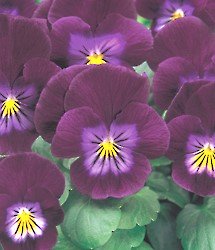Let’s Get Ready for Spring

We are now about 2 weeks out from springing forward to longer days with later daylight hours and about 3 weeks from the first day of spring. With days getting longer and warmer, it’s time to ramp up for the growing season.
With the nice weekend ahead, there are plenty of tasks to get underway that will open the way to being ready when planting season arrives. Remember, early cool season veggies can be planted weeks before it’s safe to plant annuals. That means planting time really is just around the corner.
Get going on spring readiness
Growing season prep applies first to tools and then to the yard. To be effective and efficient in any task, you need the right tools and tools in good condition. Take stock of the shovels, rakes, weeding tools and pruners that are stashed in the garage or shed.
Do DIY repairs and schedule maintenance services for the tasks you won’t do yourself:
- On metal surfaces of shovels and other tools, remove rust with steel wool and apply WD-40.
- Replace broken handles on shovels and rakes.
- Sharpen blades on pruners and also on the lawn mower.
- Schedule the spring tune-up for the lawn mower. You’ll want it to be ready to roll and not waiting in line when it’s time for the first mow of the season.
- Also schedule spring lawn aeration and sprinkler system activation. It pays to be the early bird on these spring services.
Begin yard cleanup
On warm, sunny days, we can accomplish a lot of spring clean-up. Work that you can get out of the way early in the season won’t slow you down when it’s time for planting. Once snow has melted:
- Clean up leaves and debris from planting beds.
- Top dress beds with fresh wood mulch using locally-produced mulch that has been recycled from last season’s green waste. New mulch is a quick refresher that adds instant curb appeal.
- In the veggie garden, clean out old debris, then apply and till in compost.
Selectively prune trees and shrubs
Once the pruners are sharp, you can start pruning non-flowering trees and shrubs.
- Look for tree branches damaged by winter winds and snow as they will be an ongoing safety hazard and liability. If you cannot reach broken branches in a tree with a pole saw while standing on the ground, get professional help.
- The exception to early pruning is spring-flowering fruit trees and shrubs that bloom on last season’s wood. They should not be pruned until after they have flowered as pruning will remove the blooms you want to enjoy. Examples include crabapple trees, forsythia, viburnum, lilac and dogwood. Prune and thin these plants soon after blooms have subsided.
- Plants with inconspicuous flowers that are grown more for their colorful foliage than their small flowers, can be pruned in spring as this will promote foliage growth. Examples include broad leaf evergreens such as euonymus, as well as purple leaf plum, burning bush, sand cherry and willow.
- Cut back ornamental grasses left standing for winter interest. They should be pruned before new growth emerges and intertwines with last season’s dead stalks.
Remove dead plants or those that have overgrown their space and outlived their usefulness. Opening up these areas in the yard will make replanting more efficient later on.



